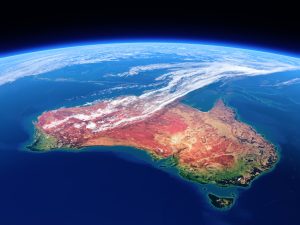Australia, in unveiling its new climate commitments ahead of COP26, the U.N. Climate Change Conference, failed to convince the world it is ready to take the climate crisis seriously.
In an attempt to ease global concerns about Australia’s reliance on fossil fuels and its history of dragging its feet on, and at times even undermining, global climate action, Australian Prime Minister Scott Morrison unveiled the country’s new climate plan last week.
Morrison said his government will reach net zero emissions by 2050 the “Australia way,” using “technologies not taxes.”
But ultimately, Morrison’s plan is scarce on details, relying in part on technology that hasn’t even been invented yet instead of cutting emissions by phasing out fossil fuels. Also missing from Australia’s climate plan is a 2030 emissions-reduction target.
Any hope Australia held for the commitment neutralizing key allies’ concerns about the country’s lackluster climate policy was quickly dashed.
John Gummer, Lord Deben, the U.K.’s climate change committee chair and a key British government adviser, accused Morrison of showing “no indication” of delivering on his 2050 net zero climate plan.
“I’m afraid that if you look at Scott Morrison from Australia, we’ve squeezed out of him a commitment to net zero in 2050 but there’s no indication at the moment that he’s got a proper program for that,” he told the BBC.
Gummer said it was “very sad” that a “great country like Australia should change our climate.”
“Because that’s what happens. If you allow people to keep on doing this, it’s our climate as well as theirs that’s changed.”
Leader of the Australian Green Party Adam Bandt said “the Australian way” is not a plan.
“Net zero by 2050 is a death sentence. Morrison’s plan is dangerous and will cost our kids their future,” he said. “The only thing we will ‘meet’ is our alarming trajectory towards 1.5 degrees of warming. The only thing we will ‘beat’ is our previous heatwave and bushfire records.”
Australian billionaire Mike Cannon-Brookes, who has already invested AU$1 billion into renewable energy and announced late October a further AU$1.5 billion, slammed the government’s plan.
“I read all 129 pages of the pamphlet. It’s not worth the paper I didn’t print it on,” he said. “I understand technology damn well. This isn’t a ‘technology driven approach.’ It’s inaction, misdirection, and avoiding choices.”
Morrison’s lackluster commitments and disregard for Australia’s Pacific neighbors have been particularly jarring.
Prior to the unveiling of the plan, Pacific Island leaders said there will be a catastrophe if Australia doesn’t set an example and commit to harder 2030 cuts.
Asked by a reporter what Morrison says to those neighboring countries now, he responded with a dismissal that has become typical, saying “I don’t accept the premise of your question.”
The Federated States of Micronesia President David Panuelo told Radio Australia: “The plan is not clear. No specific, measurable goals, somewhat hollow. The more you read the less you know.”
Fijian Prime Minister Frank Bainimarama said Australia’s pledge is a start but will require further commitments.
“I’ve now urged Scott Morrison to show us a concrete plan to halve emissions by 2030,” he tweeted. “I’ve given him a copy of Fiji’s Climate Change Act as a guide – it is our uniquely Fijian way of following the science to keep faith with future generations.”
































